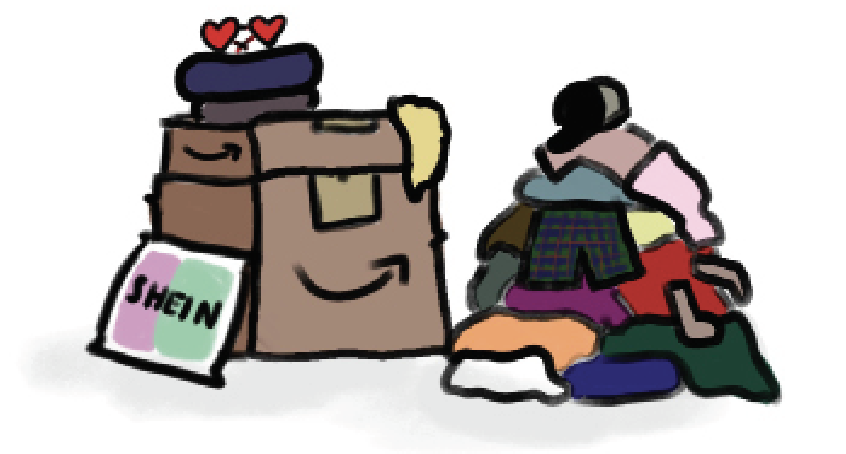*This article is republished from Deerfield fashion magazine Beyond The Valley (beyonddavalley.com)

Reporting on the horrors behind the seams of the fast fashion industry are not new; we’re all familiar with stories of child labor and poor working conditions in sweatshops, and the environmental pollution it causes on a global scale. Despite knowing that fashion destroys individual lives and the globe, we still dance to “Timber” by Ke$ha in clothes from Amazon (of course, we ordered multiple outfits last-minute just to make sure at least one came in time) and chuck them in the landfill bin the next morning without a second thought. However, the consumerist nature of dance attire leaves a huge social and ecological footprint that we must work to reduce. When it’s time to disco, students search for silver skirts and neon tops, and for plaid flannels and cowboy boots before Throwdown. With its seemingly endless options at cheap prices and fast shipping, Amazon is the most popular platform. However, the site’s affordability and convenience come at a steep price that is paid by unprotected young workers in deep poverty.
An October 2019 Wall Street Journal investigation revealed that Amazon’s supply chains involve dozens of Bangladeshi factories that most leading retailers such as H&M and Nike banned after the 2013 collapse of the Rana Plaza factory in Dhaka, Bangladesh, which killed 1,138 people and injured over 2,500. Despite the dangers to underprivileged workers, Amazon continues to source clothing from blacklisted factories where conditions have not improved in the decade since the collapse. According to Earth.org, laborers in Bangladesh spend 14 to 16 hour workdays stitching shirts in “poor, unhygienic and unsafe” conditions (such as being exposed to harmful substances without enough ventilation) with little legal protection from the government. Protesters are often punished with dismissal from their jobs. Cheap clothing on Amazon is made by cheap labor, which comes at the expense of real people.
The environmental cost is also significant. Fast fashion is responsible for 10% of yearly global carbon emissions, more than international flights and shipping combined. In a March 25th article, the UN reports that the industry also uses around 93 billion cubic meters of water per year. Additionally, fast fashion clothing is made using plastic microfibres such as polyester, nylon and spandex, which take up to 500 years to fully decompose. This means the remains of the sequined top you wore to disco this fall could still be circling the oceans in 2523. When the clothes’ poisonous dyes and chemicals enter the food chain, they can cause digestive problems, skin irritation and multitudes of other health problems. The poor quality of fast fashion clothes only increases the ecological damage; the thin fabrics, weak seams, and subpar construction make it easier for consumers like us to throw them away without much regret, perpetuating the cycle of fast consumption.
So the next time you are preparing for a dance, whether that be throwdown or junior prom, stop before clicking on Amazon, Princess Polly, or Zara. Ask your proctors or other upperclassmen if they have items from years past that you could borrow, or if anyone else has any extra pieces. If you can’t source from within Deerfield, try online thrifting at stores like Depop, Poshmark, thredUP, and Vestiaire Collective. Turn to fast fashion only if all these options fail, but I would bet a pink cowboy hat that you can find something cute and cheap second-hand. The best part is that you do not have to fund the exploitation of a teen or fuel climate change to look hot on the dance floor.

